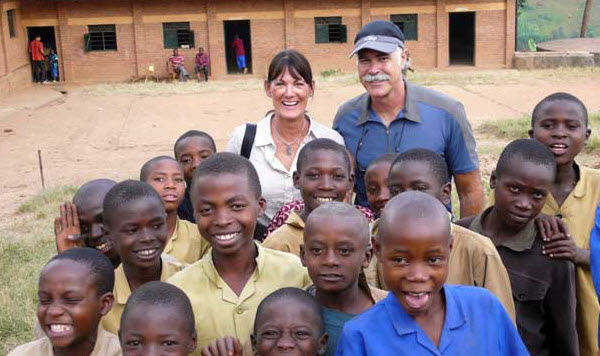Family Lesson Inspires Unique Model for Corporate Giving; Changing the Lives and Hearts of Employees and Charities Around the World
Unlike most financial advisors, Mark Van Mourick did not earn his stripes on the back of a client’s portfolio. He lost both parents in a plane crash at the age of 12 and bounced around several foster homes,
When he turned 18, his boot camp in investing began as he made his first purchases in real estate and the stock market with the inheritance from his parents. Mature decision-making, forward thinking and strategic purchases in real estate and the stock market at the age of 18 laid the groundwork for his career. Today, Van Mourick sits at the helm of Optivest Inc.as Chief Executive Officer, but his greatest source of pride is his ability to transform lives through the Optivest Foundation. Employees and charities around the world have been transformed by this highly unique model for corporate giving; a model he hopes will become emulated by other corporations.
Very committed to the idea of giving back, Mark and his wife Trish taught their three growing children how to make a difference in the world. In family meetings, they would encourage their children to take 10 percent of their money and give to a worthy cause. That very basic model became the impetus for what is now known as the Optivest Foundation.
10% of Every Pre-Taxed Dollar Disbursed to Charities Around the World
The Optivest Foundation model is considered by some to be aggressive. While The Center on Philanthropy reports that corporate donations usually hover around 1 percent of pretax profits, the Optivest Foundation generously takes 10 percent of every single dollar —pre-taxed revenue —and earmarks it for charities in need. The common denominator for consideration is that the cause in need empowers sustainable change through educational programs, health services and is based on Christian principles.
Since the Foundation’s origination in 2007, more than 1.3 million dollars have been dispersed to people, projects and initiatives around the world. Last year alone, 48 charities were supported through contributions by the Optivest Foundation. And although the financial contributions are significant to the changes imparted by the efforts of the Optivest Foundation, the greater impact as noted by Trish and Mark is the fact that, “serving hands change a heart.” Participation is company-wide with active involvement at every level. The desire to participate trickles down into employees, vendors, clients and partners as they take turns participating in trips around the world.
From Building Wells to Creating Maize Mills – Foundation’s Formula Makes an International Difference
The Optivest Foundation makes an impact through financial investments that change lives. Below are a few of the groups they work with.
· The Sumba Foundation is a private, non-profit, non-governmental organization dedicated to helping the indigenous people of Sumba, Indonesia. The Van Mourick’s travel to Indonesia every other year to build wells and irrigation systems for clean water systems, while also fostering education programs, providing health services and sharing the love of Christ to the local community.
· This past June, the Van Mourick’s visited Lilongwe, Malawi where Y-Malawi,a partnership organization working with Christian organizations to provide community-wide, sustainable development and transformation, is providing a multi-dimensional approach to lift up one African village at a time and rise above poverty. While there, they visited the maize mill that the Optivest Foundation provided funds to build last year. Once completed, this mill will enable locals to more efficiently grind the local grain, create a community center for fellowship and provide a revenue stream for the local village leader to use for ministry and evangelical purposes.
Corporate Giving Model Not En Vogue – But a Model for Emulation
The successes of the Foundation model are so powerful, that the Van Mouricks want to share this structure with other business leaders and validate that social responsibility is no longer a business practice reserved exclusively for large corporations. It’s being embraced by companies of all sizes and producing remarkable results — not just for stockholders but all stakeholders. The potential exists for the Optivest Foundation to become an example of how a corporation can structure a charitable division. The Van Mourick’s hope is to inspire other companies to consider and/or potentially adopt the Optivest foundation model.

